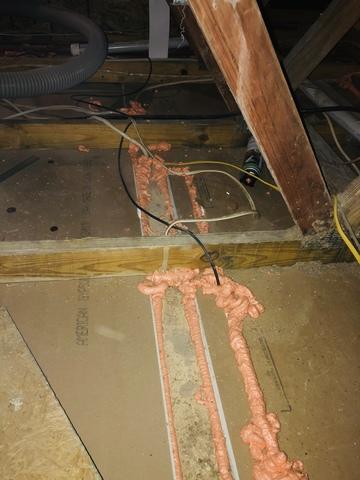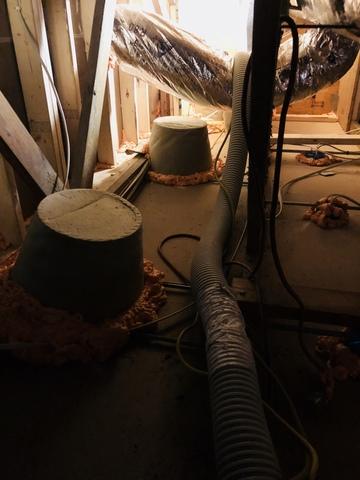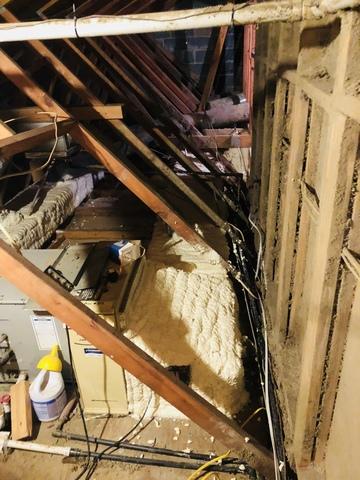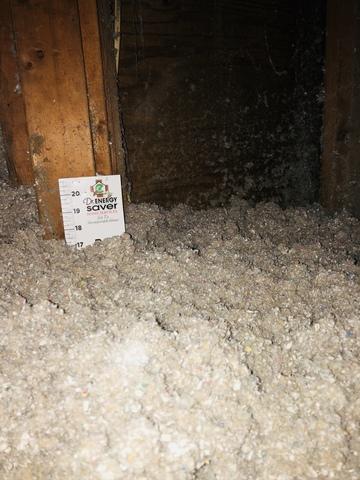
Air Sealing
This photo shows where we sealed all of the potential points of air leakage in and out of the attic. The orange puffy stuff is what is actually doing the sealing, and this step is necessary before insulating the floor. The insulation will not fully do it's job if the floor is not first sealed.

TiteShell Cover
This image displays a TiteShell can light cover. This inflammable cover protects you from the fire hazard a leaky can light can be. A can light is the other side of recessive lighting that you cannot see. A leaky Can lights can lead to more draft homes and lower floors that are noticeably colder. This source of leakage is also costing you more on your monthly fuel and electricity bills.

More Can Light Covers
This image simply is showing you another angle of the TiteShell can light covers. Installing TiteShell Covers will lead to less drafty homes, more comfortable spaces, and a more energy efficient home (lower bills!).

Duct Encapsulation
Here we have a duct that has been encapsulated with Tite 'n' True Foam. This duct was not properly heating and cooling the home, resulting in more uncomfortable homes and higher bills. After encapsulating the ducts one will find their home cooler in the summer and warmer in the winter, along with other bonuses like quieter HVAC systems and less dust being blown around as well as longer equipment life.

Blown-in Insulation
In this image one can find Dr. Energy Saver's TruSoft Cellulose Insulation after it has been blown into the home. In another part of the attic which is not displayed here, we installed Closed-Cell Spray Foam in the kneewall spaces for further insulation.

Scuttle Cover
This is an up close shot of the interior view of the entry point of this home's attic. Every attic has a different method of entry, may that be stairs, a drop down ladder, or a literal hole in the ceiling, and each come with their own set of issues regarding insulation. In this case we are dealing with a literal hole in the ceiling and it was leaking all of the conditioned air into the attic, leaving us with uncomfortable rooms and expensive fuel and electric bills. The SilverGlo foam insulation panel (next image) is used as a part of the new scuttle cover to keep the conditioned air in the part of the home that is lived in.

SilverGlo Scuttle Cover
This is just a photo of what the actual SilverGLo piece looks like before it is inserted into the scuttle hole. This is a foam product that insulates your attic.

